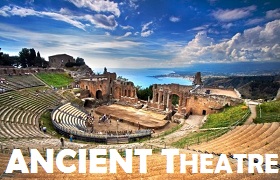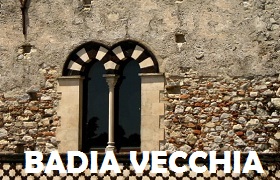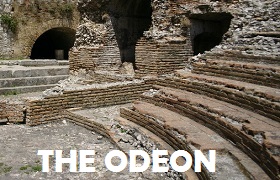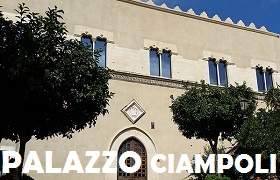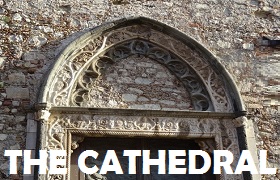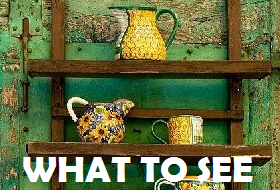TAORMINA
PALAZZO DUCHI DI S. STEFANO
Taormina Palazzo Duchi di S. Stefano is surely one of the masterpieces of Sicilian Gothic art, in which the elements of Arabian and Norman art merge. Arabian reminiscences are aroused by the decoration on the top part of the palace: a wide frieze runs along the east and north facades formed by a wavy decoration in lavic stone alternated with rhombus-shaped inlays in white Siracusa stone, together forming a magnificent lace of marquetry.
Norman art instead is recalled by its square tower-like plan and by what remains of the swallow-tailed merlons on the top of the building. The Palace is made up of three-square overlapping sections. The entrance to the ground floor is an ogival arch constructed with squared bricks of black basalt, lavic stone and white granite, Taormina stone.
The first floor was reached by means of drawbridges and moving staircases through the small door which can still today be seen between the two mullioned windows on the first floor. An internal staircase, made entirely of wood, was reproduced when the building was restored, in the 18th century.

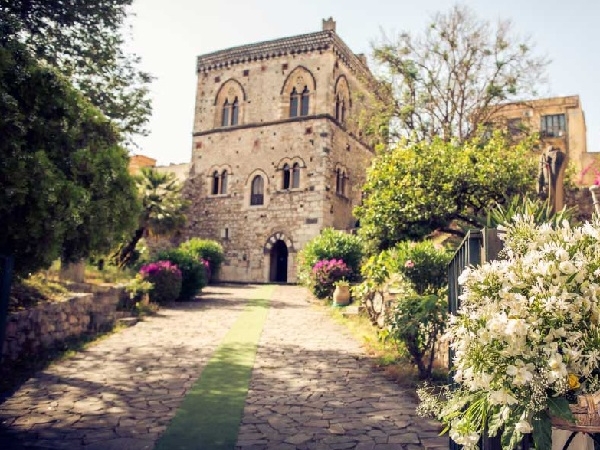
TAORMINA
PALAZZO DUCHI DI S. STEFANO
On the second floor there are four beautiful windows indisputably in Gothic style, two facing east and two facing north, the noble prospects of the palace. The four mullioned windows have an elaborate structure with rosettes and small trilobe arches as well as triple cordons framing the ogival arches. A column of pink granite stands in the middle of the ground floor and is thought to have once been in the Greek Theatre.
In the gardens overlooked by the noble facades there is a well for the collection of rain-water (a puteal) which was the water supply for the whole palace. The municipality of Taormina only gained possession of Palazzo Duchi di S. Stefano in 1964 when it was bought for 64 million lire (about € 33.000,00) from Vincenzo De Spuches, a young descendant of the De Spuches family, who lived in Palermo.
Taormina Palazzo Duchi di S. Stefano today houses the Mazzullo Foundation, run by a clever sculptor who has succeeded in turning tradition into modernness. Many of his sculptures are on show in the palace. It is a location for civil weddings and temporary exibitions.
.










